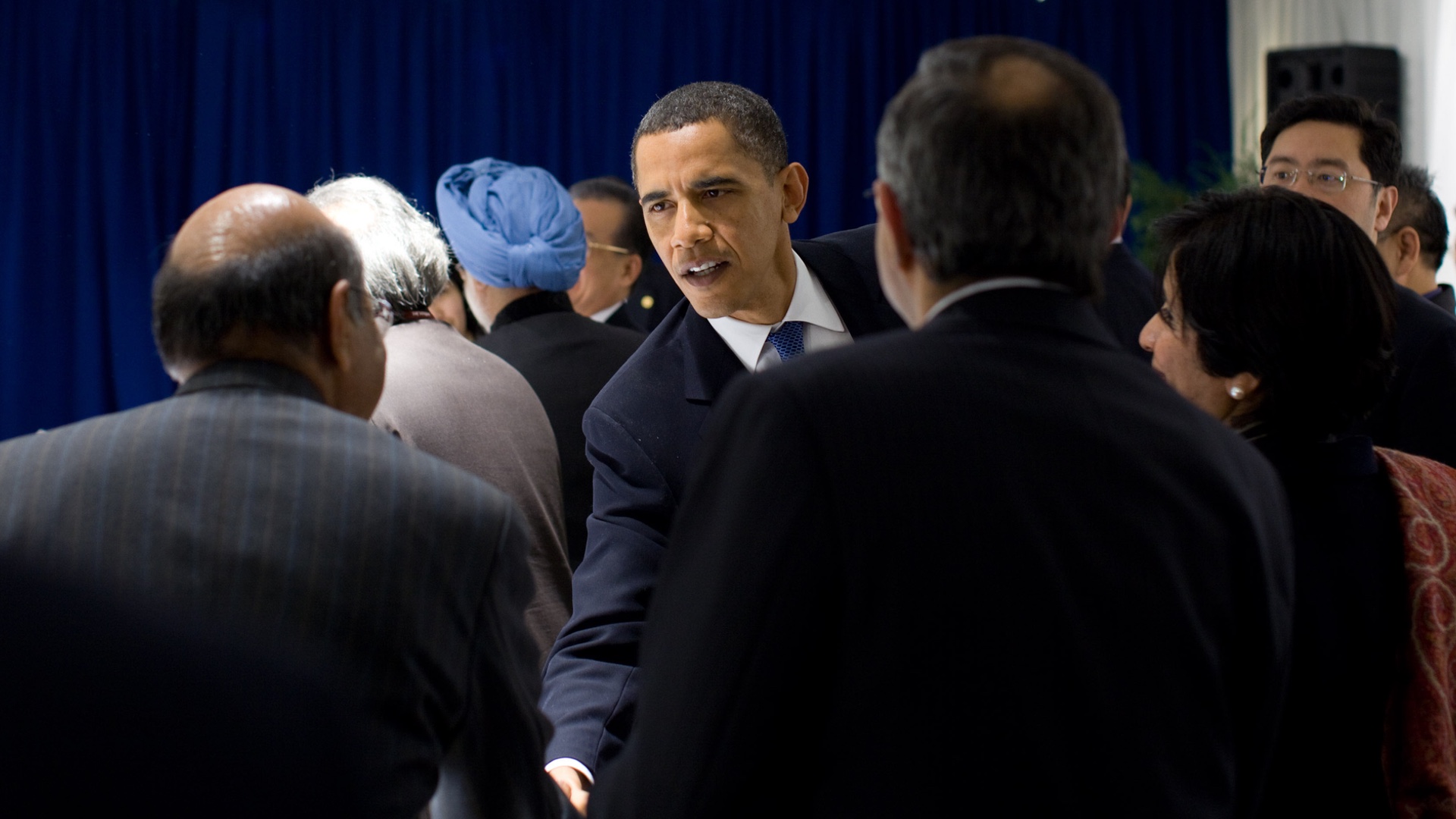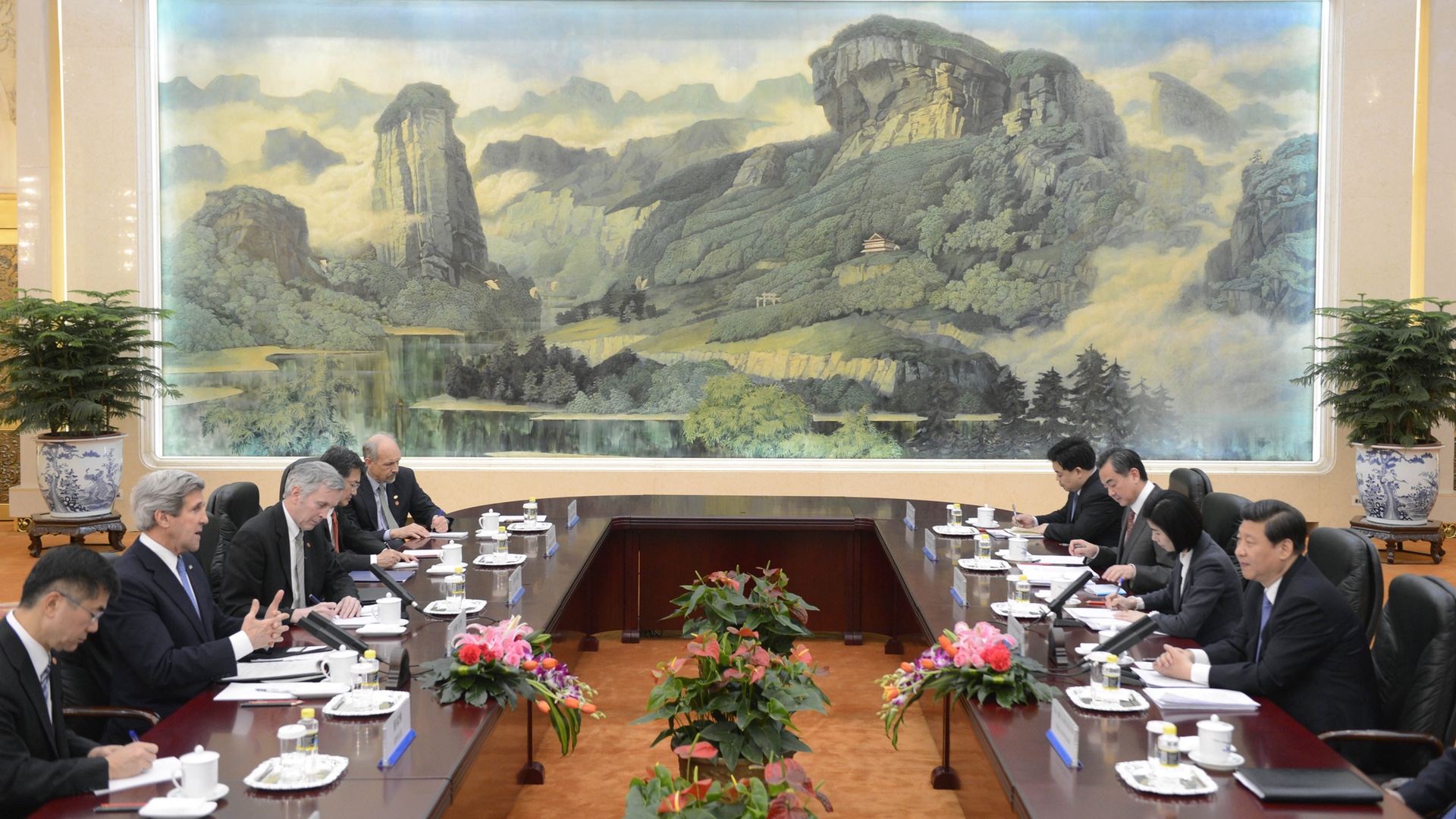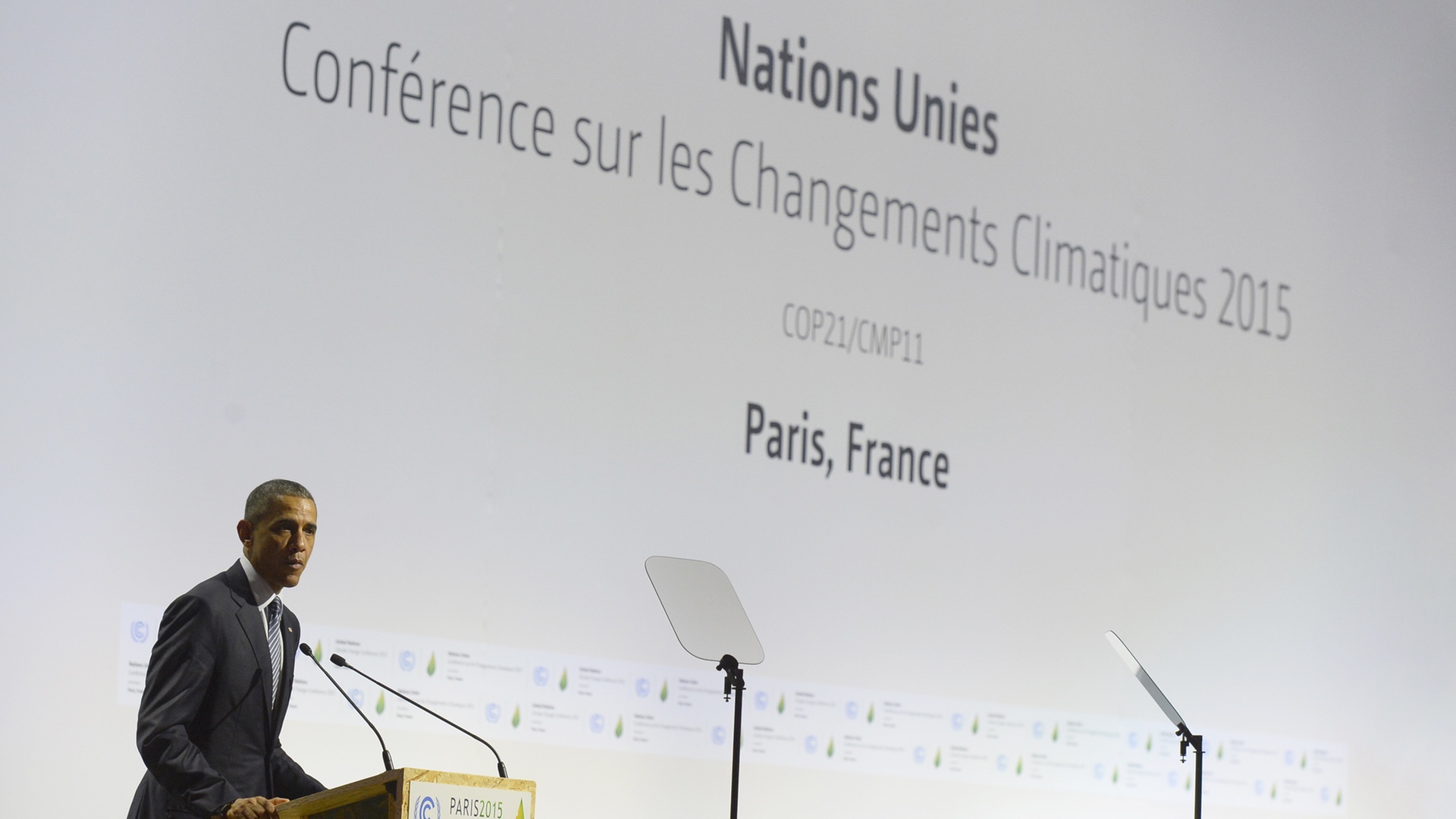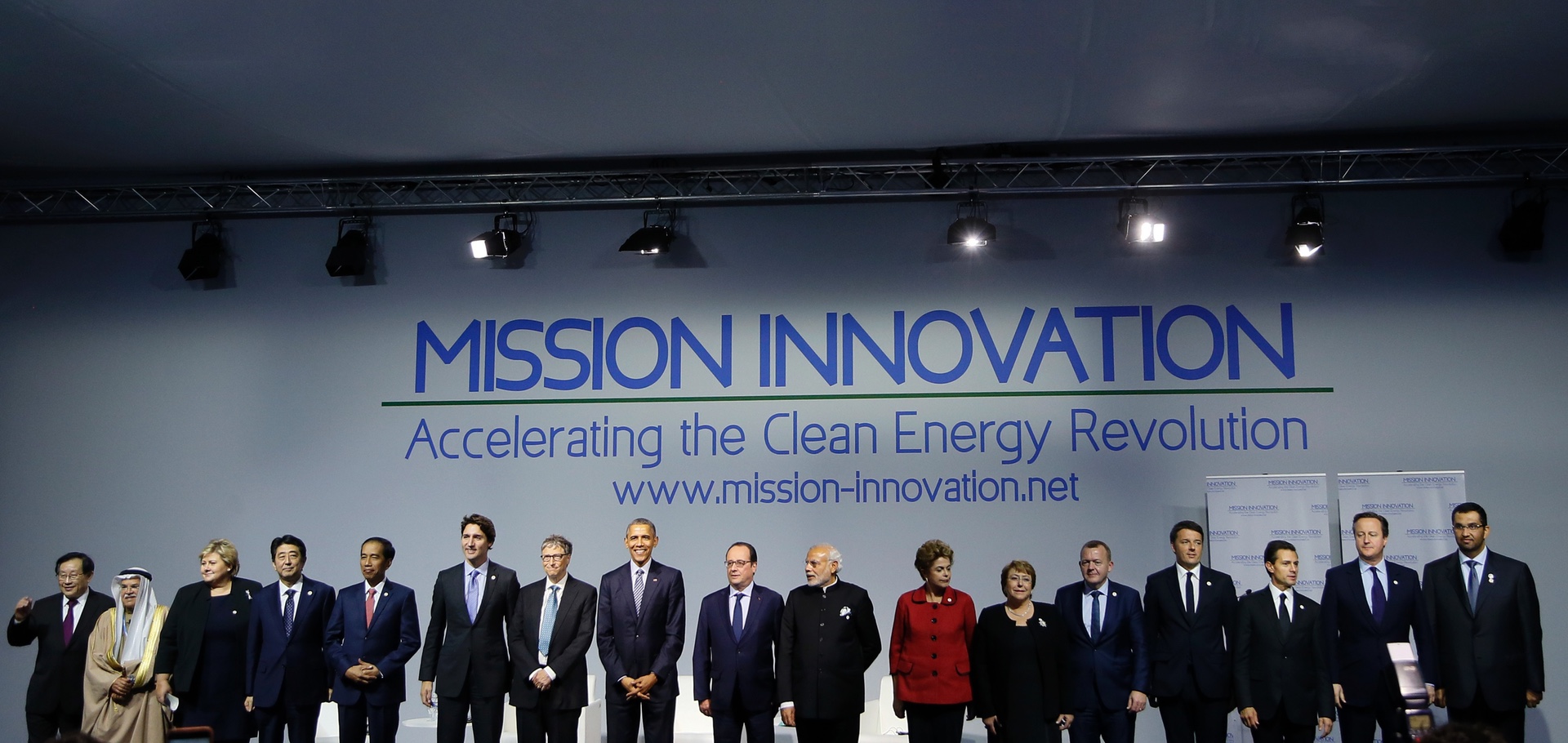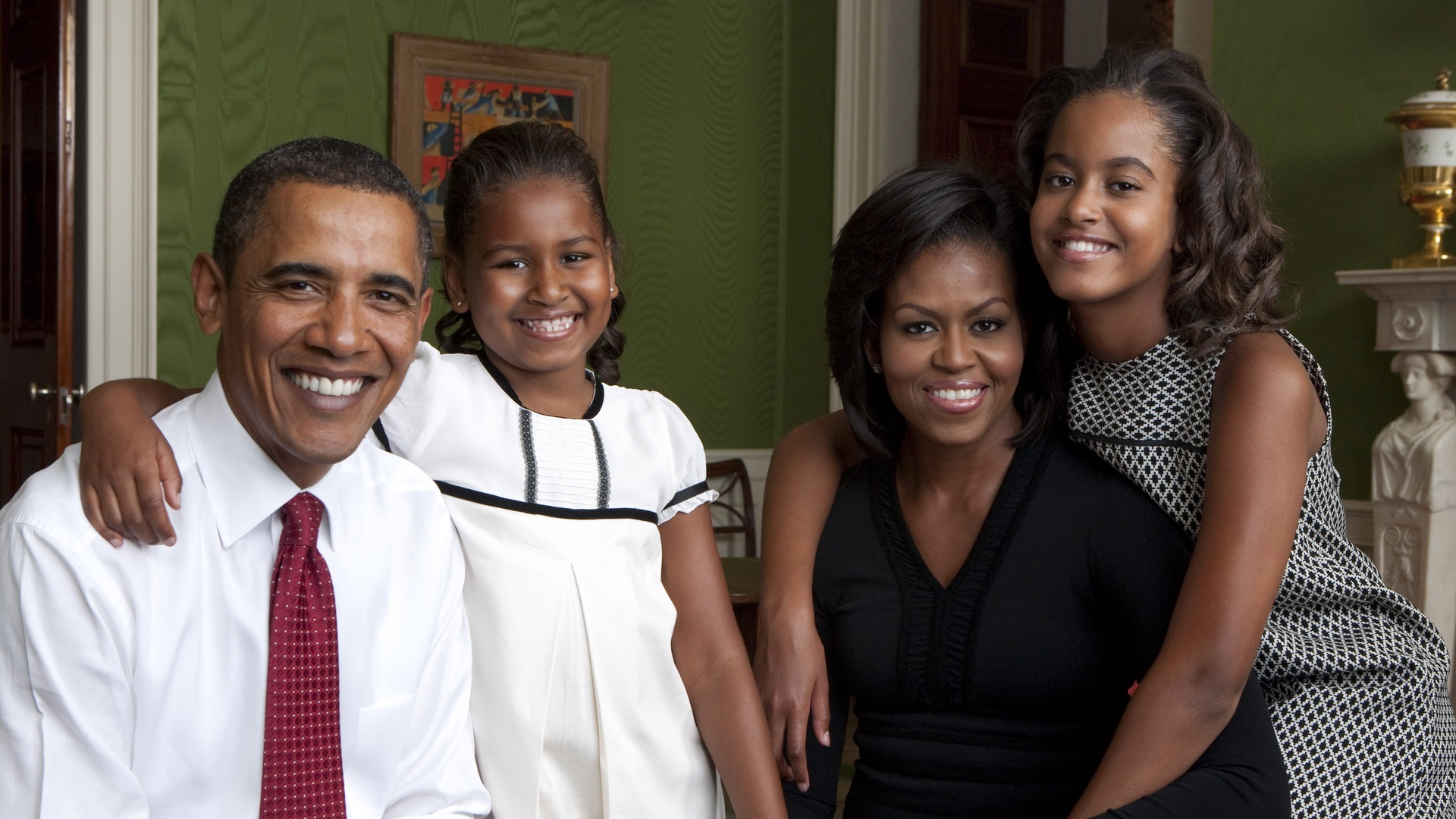For Barack Obama, stopping the inexorable advance of global warming
felt like an almost personal mission.

Despite tangible accomplishments—bringing China to the table during
the Paris climate change conference or advancing clean air technology
here in the U.S., the president and his team still question if their
efforts—if the world’s efforts—will be enough to turn back the
tide and save the planet.
Well, it’s a matter of life and death. I mean it’s very
simple—it really is. This is the first president [who] recognizes that
this is a generational moral responsibility, that we will be judged on
whether or not we heeded the evidence and responded.
During the campaign, this was an issue that [the president] was
focused on and intellectually invested in understanding. He has seen
what has happened over the last several years, which is that the
science continues to tell us that…the pace of this problem is
significantly outstripping the steps the world is taking to try to
address it. I think that has motivated him.
My friend and colleague in the United States Senate, Pat Moynihan,
from New York, had a great saying: “Everybody’s entitled
to their own opinion but you’re not entitled to your own
facts.” Report after report has documented how the science
works.
The president led an energy revolution in many ways, using the
Recovery Act to seed renewable energy, using his leverage with the
auto industry to raise fuel efficiency standards in a historic way,
using his authority through the EPA to ratchet down greenhouse gases,
bringing the world together around the Paris Climate Change Agreement.
In December of 2009, in Copenhagen, more than 100 world leaders,
including Barack Obama, met to try to forge an agreement to help heal
the planet. Despite high hopes, the conference was marred by discord,
and the non-binding resolution that emerged has been widely seen as
anemic, at best. But looking back at Denmark, the president and his
team now say the conference may have planted the seeds that led to
more fruitful advances years down the line.
At the end of 2009, when the president and then-Secretary of State
Hillary Clinton went to the Copenhagen climate talks, they showed up
in a chaotic environment. There was no semblance of order. It was so
bad that [they] had to run around the convention hall to find the
Chinese and the Indians and the Brazilians, the delegations that had
holed up in a meeting room to try to avoid the president. He had to
literally bust in on the meeting, he and Secretary Clinton, to sit
down to say, “Look, we’ve got to find some path
forward.”
Copenhagen crashed, and it crashed largely because China and the G77
countries [a group of developing countries formed in 1964], felt there
was no methodology on the table that recognized their challenges. That
the developed world was dumping responsibility on them. And there was
this great divide. When the president made me his secretary of state,
it was clear to me that if we were going to move forward, we had to
have China.
Copenhagen is largely written off as a failure, but the seeds of
progress were planted in the president and Secretary Clinton’s
engagement there. What came out of that failed negotiation was a sense
that if we were going to build a new global coalition to fight climate
change, it was going to have to look and feel different than [what] we
had been doing.
For decades, this had been fought as two teams: developed and
developing countries. And the U.S. and China were captains of the
teams and they came and butted heads. And the developing countries
said, “It’s on you guys to combat climate change
and…that just wasn’t going to work. And that was what was
clear out of Copenhagen. If we were going to change this, we were
going to have to mount a new global effort to get there.
One of Kerry’s first major trips as secretary of state was to go
to China, in April of 2013. On the table: hammering out the first
steps of a new partnership between that country and the U.S. to work
together to beat back climate change.
Within about a month and a half of being secretary, I went to China.
We got them to agree to create a working group with a view to trying
to get in a place where our two presidents, President Xi and President
Obama, could stand up before the world and say, “Here we are,
China and the United States. [We] disagreed to the point of failure in
Copenhagen; now we’re agreeing we have to move forward.”
That was a sea change, dramatic, monumental moment of transformation
on this issue. And when President Xi and President Obama announced our
joint intended reduction levels, every other country knew, “Wow,
something serious is happening.”
Despite the BP oil spill in the Gulf of Mexico in April of 2010,
legislation to put a cap on carbon emissions, championed by the
president and then-Senator John Kerry, died on the vine in an
increasingly partisan Senate. Obama was determined to do better his
second term, with or without the help of Congress.
First and foremost, we needed to move the United States from a laggard
on this issue to a leader domestically. The president tried on the cap
and trade front and failed the first term. [He] decided in the second
term we were going to move away from Congress and use the tools we
could domestically. We launched a climate action plan in 2013 and used
tools across our economy and our industry to try to increase fuel
economy of vehicles, increase energy efficiency of our buildings and
factories, and take carbon pollution out of the power sector with the
Clean Power Plan. That effort helped change the perception of the U.S.
as actually leading, and putting our money where our mouth is.
The second big piece was the U.S.- China joint statement in 2014,
where the president and his team worked behind the scenes with the
Chinese to come to an announcement where you had the two captains of
the opposing teams standing together and saying, “We’re
going to change the playing field. We’re going to jointly
announce ambitious climate targets. There is not a top-down effort to
dictate what we will do but we’re both going to do
something.” That helped unlock a process of two years of intense
diplomacy with countries around the world, to try to pull those
countries forward to support a global coalition to Paris.
In the months and days leading up to the monumental United Nations
conference on climate change, to be held in Paris at the end of 2015,
Secretary of State Kerry traveled the globe, priming attendees
beforehand, keen to avoid another rehash of the failure in Copenhagen.
We were bringing countries to the table, teeing up Paris. And when the
time to go to Paris came, I spent 10 [or more] days negotiating every
day, working with countries, bringing India, bringing Korea, Japan,
other countries to the table so we could work through the differences
and get an agreement. And all the leaders came on the first day. That
was a big debate: Do they come the first day [or] at the end? The
decision was made to come the first day, and it set it into motion and
was very dramatic, with all of these leaders there saying, “We
have to get this done.” It created an energy that was essential
to the negotiations.
The president flew over to Paris on the first day, spoke to the
conference and then had meetings with key countries: the Chinese, the
Indians, trying to say, “Look, our negotiators are going to be
here for the next 10 days. But can we try to find some agreement that,
when push comes to shove and things get tough, we look each other in
the eye and say, ‘Okay, now is the time when our set of countries is
going to come together and really solve this.’” It
wasn’t easy. Part of the way we managed…that second week,
when we were all in Paris in negotiating rooms, [was that] every
evening or every morning, depending on the complicated time zones,
[the president was] making calls [from Washington] to the Brazilians,
or the Indians, or, ultimately, the Chinese. He had a couple of very
important interactions [by phone], particularly with President Xi of
China, near the end of the conference, where that sense of
understanding was cashed in to say, “Okay, now’s the time.
We need to tell our negotiators, we need to come together, we need to
lock it down. Whatever small details they can’t agree on,
it’s time to put them to bed.”
There’s nothing as exciting—and nerve wracking—as a crucial game
going into overtime on the last day of the playoffs. That was
essentially the situation on the final afternoon of the Paris
Conference, on December 12, 2015. The issue at stake: a matter of
semantics, that happened to mean everything.
The thing that was most harrowing in those last couple of days—we are
negotiating on the ground with the president talking to heads of
state, [we] had found landing zones on all of the key issues, the
financial component, transparency, and thought, “Okay, maybe
we’ve landed here. Maybe this will finally work.” The
conference was supposed to end on Friday but it didn’t, so we
woke up on Saturday morning and the French, as the conveners, were
going to release a final text with the idea that this was the
take-it-or-leave-it text. And we would all agree, or not, later in the
day on Saturday.
So we woke up, [and] we thought we were in the right place. We got a
text around noon. We came back to the room with the team running
through the text. And Secretary Kerry, Todd Stern [U.S. special envoy
for climate change] and I were there, getting input—Does everything look okay? All of the sudden, somebody came in and said, “We’ve
got a problem.” One of the sentences that we had understood
would say, “the parties should do the following
things” said “the parties shall do the following
things.” That distinction, between should and
shall, had very significant legal consequences. And we had
all agreed that it was going to say should and not
shall. So we had a harrowing half an hour, 45 minutes, where
we tried to understand what was going on. We connected with the French
and confirmed that this was a mistake, that it was supposed to reflect
what we had all agreed and that they were going to find a way to fix
it. But for a period there…all of our hearts dropped. We thought
that maybe we were going to lose this very delicately put together
effort.
I can tell you it was a very dramatic moment when the agreement was
gaveled into effect after all these years of effort—186 countries had
signed up, each with their own plan to reduce emissions. And
we’re on our plan. We’re ahead of schedule. We’re
actually meeting every target we’ve set.
In August of 2015, the president announced his Clean Power Plan, in an
effort to reduce carbon pollution from the power sector in the United
States.
It’s the single biggest thing any president has ever done to try
to combat climate change. It was years in the making and it reflected
the core of the president’s effort to combat this existential
threat. So we’re walking over to the East Room for him to make
this announcement. [It’s] a big opportunity, really exciting,
and the president pulls out an article from Science that he
had been reading the night before, about the fact that the climate
crisis was getting worse. And he said, “You know, this is really
getting to me. We’re not doing enough. We’re not moving
fast enough.” And he was clearly affected by it. And when we
walked over to the East Room and met up with Gina McCarthy, the EPA
administrator, he didn’t say, “Congratulations. This is
really exciting. I’m really glad we got to this.” Instead,
he pulled Gina over and said, “Have you seen this article?
You’ve got to read this article. You’ve got to tell me
what you think of it and we’ve got to figure out what more we
can do.” Up until he walked on stage he was focused on the fact
that we weren’t doing enough.
No president has set aside as many square kilometers of ocean for
marine preserves. No president has ever before set aside as much land
for parks and for preservation. No president has ever been as forward
leaning on protecting the environment, whether the shift from fossil
fuels to the National Climate Action Plan [enacted in 2013 to cut
carbon pollution], to the power plant regulations to the automobile
and truck standards, to efficiency standards.
The way the president thinks about the need for us to tackle [this
issue] is different from any other issue I’ve worked with him
on. The way he describes it is, “Look, on education reform or
job creation, [or] the economy…progress is frustrating.
It’s too slow, it’s halting, but you can see that
we’re moving in a positive direction. With climate change,
that’s not true. Things are getting worse and the pace of that
is increasing to the degree that we actually [will] face a point in
time—hopefully, we have not already gotten there—where…there is
such a thing as being too late. And we may have already reached that
time but if we haven’t, we need to do everything we can to get
ahead of this problem because it is a unique threat.” He talks
about this issue and he works with us on this issue with a degree of
urgency that is infectious. I think that gives all of us the ability
to work, whether with a particular industry or internationally, with
that sense that this is something the president is ready to fight for.
Share "A Sea Change On Climate Change"
